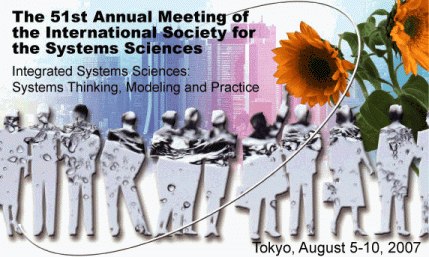The Analysis of Effect of a “White Collar” Exemption System on Working Hours and Wages.
Keywords:
principal-agent model, white-collar exemption, non-cooperativ game theoryAbstract
A “white-collar” exemption system is the system that exempts workers who are regarded as “white-collar” from overtime payments protection. This system has been employed in US since 19--. Recently, the introduction of this system becomes a controversial issue in Japan. Employers groups which intend to introduce this system insist that “in line with a performance-based payment system, creating a “white collar” exemption for certain employees would facilitate a shift towards compensating employees for the actual work that they do, not for the number of hours they spend at the work place”. However, workers groups who oppose the proposal, insist that the system increases the incidences of “karoshi”, a sudden death caused by excessive overtime working, because the system gives workers an incentive to work longer in order to get better wages. On this point, employers groups argue that the system would motivate “white-collar” workers to work more efficiently and productively. Unfortunately, there is no formal analysis of the effect of “white-collar” exemption system on working hours and workers’ productivity. This present paper aims to fulfil this gap. In order to analyse an incentive system which can motivate workers to conduct more efficient work, the principal-agent model is widely used. The principal-agent model consists of objective functions of the principal and the agent. Let O(p,e) denote an expected output, where p is a productivity constant, e is a level of effort of the agent. Let I(m,e) denote internal utility function, where m is a constant of motivation toward the task. Let -C(e) denotes a cost function, f denotes fixed wages, and R(s, ) denotes a risk function, where is a standard deviation of external effects on the productivity constant s. The objective function of the agent under the performance-based wage system can be expressed as: V = sO(p,e)+f+I(m,e)-C(e)-R(s, ). The objective function of the agent under the work-hour system can be expressed as: V = T(e)+b+I(m,e)-C(e)-R(s, ), where T(e)is an overtime payment, b is a basic salary. The utility function of the principal under each system can be expressed as: U = (1-s)O(p,e) –f and U = O(p,e) – b - T(e), respectively. Moreover, under the current draft of the law, a labour-management agreement is required to introduce the “white-collar” exemption system. Therefore, the present paper employs the principal-agent model in conjunction with a non-cooperative game theory in extensive form. The players of the game are the principal and the agent. The principle has alternatives such as “propose the system” and “not propose the system”. If the principal selects “not propose”, the game reaches to a terminal end, which has the utility function of the principal and the agent under the work-hour system. If the principal selects “propose”, then the game moves to the agent. The agent has alternatives such as “accept the proposal” and “reject the proposal”. If the agent selects “accept”, the game reaches a terminal end which has the utility functions under the “white-collar” exemption system. If the agent selects “reject”, the game reaches to a terminal end which has the utility functions under the work-hour system. The present paper tries to find out the condition of e (effort level) and p (productivity constant) under which the strategy such that the principle selects “propose” and the agent selects “accept” constitute the sub-game perfect equilibrium of the game. In doing so, working hours and productivity of the agent under the exemption system can be obtained.Published
2007-07-31
How to Cite
Yasui, S. (2007). The Analysis of Effect of a “White Collar” Exemption System on Working Hours and Wages. Proceedings of the 51st Annual Meeting of the ISSS - 2007, Tokyo, Japan, 51(2). Retrieved from https://journals.isss.org/index.php/proceedings51st/article/view/486
Issue
Section
Decision Systems

